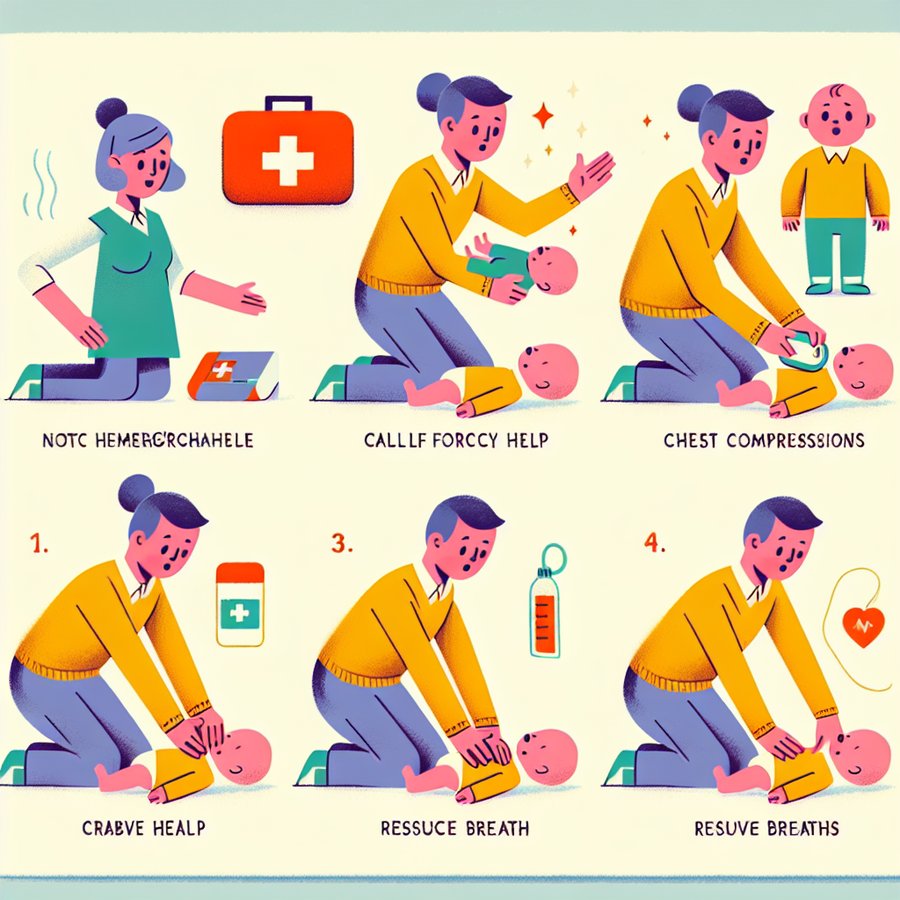When it comes to the safety of our little ones, there’s nothing more empowering and reassuring than being equipped with the right knowledge and skills—especially in emergency situations. One such indispensable skill is knowing how to perform Infant CPR (Cardiopulmonary Resuscitation). In this Infant CPR step-by-step guide, I’ll walk you through the essential steps every parent, guardian, and caregiver should know to potentially save a baby’s life. From personal anecdotes to practical advice, let’s dive deep into this life-saving technique.
Why Is Learning Infant CPR Crucial?
I still remember the first time I attended an Infant CPR class. The realization that these techniques could literally mean the difference between life and death in certain situations was both sobering and motivating. Unlike adults, infants have specific anatomical and physiological differences that require a modified approach to CPR. This makes learning the proper Infant CPR technique not just beneficial but crucial for anyone responsible for a baby’s care.
Statistics show that accidents and sudden illnesses can occur unexpectedly, and being prepared can significantly increase the chances of survival and recovery for the infant. It’s about having the confidence and calmness to act swiftly and effectively when it matters most. Let me guide you through the Infant CPR step-by-step process that every parent should know.
What Are the Key Differences in Performing CPR on Infants?
Before diving into the step-by-step guide, it’s important to understand that performing CPR on infants is different than on older children or adults. For infants under one year old, the technique involves gentle compressions with just two fingers, instead of the whole hand or two hands. Additionally, the ratio of chest compressions to rescue breaths and the depth of each compression are tailored to their smaller bodies.
Another critical aspect is ensuring that the baby’s airway remains open during the process. This can involve positioning the infant’s head carefully to prevent it from tilting too far back. Now that we’ve covered the key differences, let’s move on to the Infant CPR step-by-step guide.
Infant CPR Step-by-Step Guide
Performing CPR on an infant involves several precise steps. Here’s a detailed breakdown:
1. Check the scene for safety and ensure it’s safe for you and the infant. 2. Gently tap the baby’s foot and shout their name to check for responsiveness. If there’s no response, call for emergency help immediately. 3. If you’re alone, perform CPR for two minutes before calling for emergency help. 4. Place the infant on their back on a firm, flat surface.
5. Begin chest compressions. Using two fingers, press down on the center of the baby’s chest, just below the nipple line. Compressions should be about 1.5 inches deep and at a rate of 100-120 per minute. 6. After 30 compressions, give two gentle rescue breaths. Tilt the baby’s head back slightly, lift the chin, and cover the baby’s mouth and nose with your mouth. Blow gently for about one second, enough to see the chest rise. 7. Continue with cycles of 30 compressions and two breaths until emergency help arrives or the baby begins to respond.
It’s important to remember that performing CPR on an infant can be physically and emotionally taxing. The goal is to provide life-saving care until professional help can take over. For a more in-depth understanding and hands-on practice, consider attending a certified Infant CPR class. Additionally, you can find resources and courses through reputable organizations like the American Red Cross.
When Should You Seek Professional Training in Infant CPR?
While this guide provides a basic overview, nothing can substitute for professional training. Hands-on classes offer the opportunity to practice techniques under the guidance of certified instructors. These sessions also provide up-to-date information, allowing you to ask questions and clear any doubts. I strongly recommend that anyone caring for a baby—parents, grandparents, babysitters, and daycare providers—take a certified Infant CPR course.
Professional training not only equips you with the necessary skills but also instills a level of confidence. Knowing that you’re prepared to handle such critical situations can alleviate some of the anxieties associated with infant care. To find a course near you, check with local hospitals, community centers, or the American Red Cross.
What Other Emergency Skills Should Parents Know?
While knowing how to perform Infant CPR is crucial, there are other emergency skills and knowledge that can be equally life-saving. For instance, understanding how to prevent choking hazards, recognizing the signs of common household hazards, and knowing how to respond to a choking infant are invaluable. Additionally, being informed about essential first aid skills, such as treating burns or cuts, can make a significant difference in the outcome of an emergency.
Endeavor to create a safe environment for your baby by baby-proofing your home and staying informed about potential risks. Regularly review safety measures and emergency procedures with anyone who cares for your child. Remember, preparation and knowledge are key components of effective infant care and safety.
In conclusion, learning and mastering Infant CPR is a non-negotiable skill for anyone responsible for a baby’s wellbeing. This Infant CPR step-by-step guide is a starting point, but I encourage you to seek professional training and continuously update your knowledge and skills. Your readiness to act in an emergency could save a life. Stay prepared, stay informed, and let’s ensure the safety of our precious little ones together.













